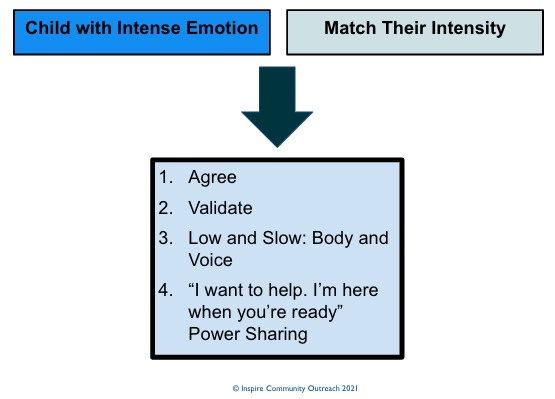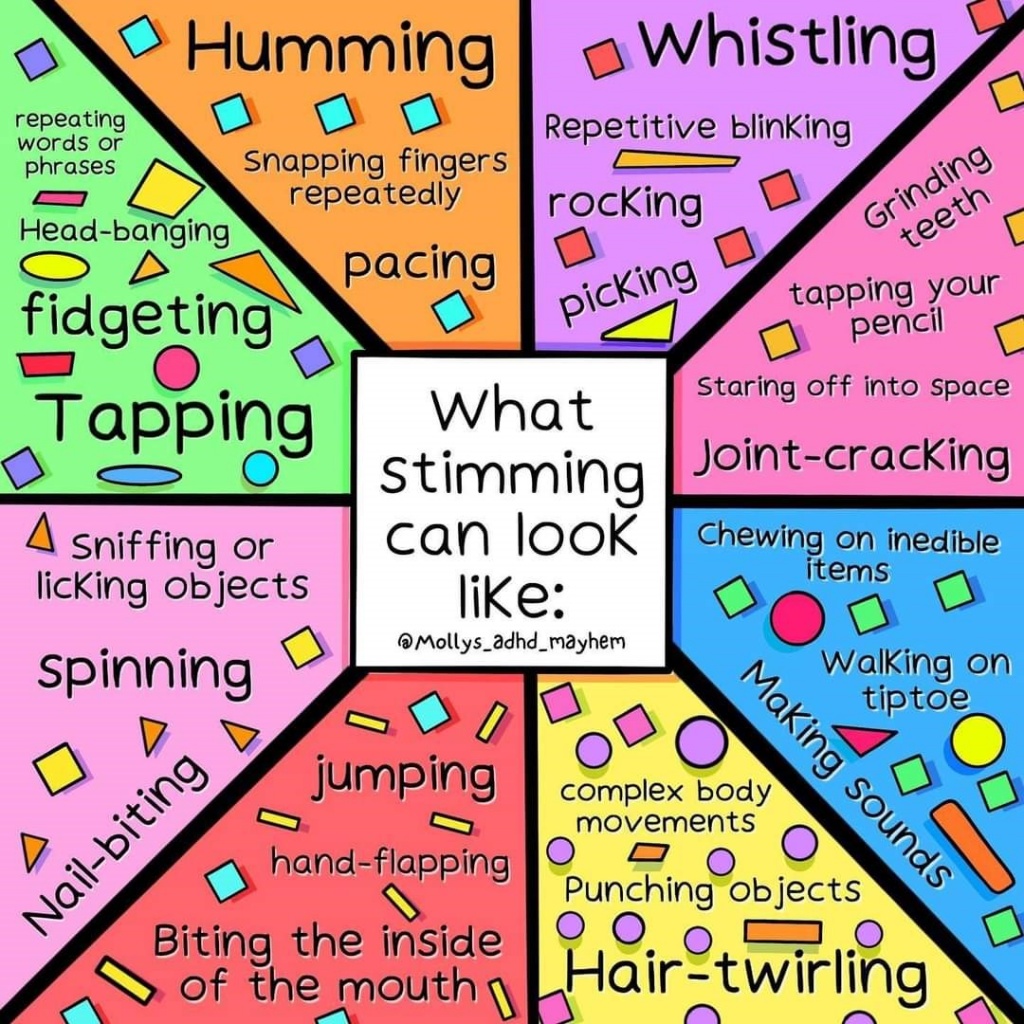Introduction to Neurodiversity
About Inspire
Inspire Community Outreach Inc. is an incorporated non-profit social services charity providing evidence and culturally informed, family-centered education and programming, designed to meet the needs of those living with mental health issues and neurological/cognitive differences. Charity # 830697231RR0001
Our mission at Inspire Community Outreach Inc. is to support the mental health of children, youth, and families.
Our vision is the development of a community that supports children, youth and families to recognize and celebrate their strengths and potential, and that puts them in touch with resources that benefit their overall well being.
Connecting with us
Please see our website at www.inspirecommunityoutreach.ca to see how we can help, or call 204-996-1547.
Who is this made for?
This is for those caring for and/or living with neurodiversities. We see you and understand the unique challenges, as well as incredible strengths this entails. This manual is for anyone interested in learning more information about neurodiversity and autism.
Important to know
You may learn some things below that are unfamiliar or feel hard. We understand that it is important to have compassion for ourselves, especially when looking back to times where we didn’t have the information we have today. We are all learning and won’t come to a day where we have all the answers. We all do the best that we can with what we know, and the good news is that we will have opportunities to learn throughout our lives.
Defining Neurodiversity
Neurodiversity understands that neurological differences are a “normal and natural variation in the human genome” (Robison, 2013). Specifically, we believe that we have a responsibility to understand differences and celebrate diversity for individuals whose “neurological predispositions are not typical” (McGee, 2012).
Terms
Exceptional– An exceptional child is one who is different in both easy and hard ways, in comparison to the average child in mental, physical, emotional and social characteristics to an extent where special educational services are needed (Heward, 2012).
Complex– Combination of physical, intellectual, health, behavioural, emotional and welfare needs along a continuum of complexity which often challenges the social, educational and health structures available to support them (Whitehurst, 2010).
Neurodiverse- Diverse neurologies are normal variations within the human genome and include ADHD, Autism, and Dyslexia (Disabled World, 2020). Brain wiring that is different or atypical when compared to the average population (Eusebio, 2018).
Neurocomplex- Umbrella term includes neurodiversity, or the neurological differences we live with, as considered by neurologists, our personal experience as we live with differences, as well as the world’s reaction and treatment of us (Taylor, 2021).
Strengths within Neurodiversity

- Dyslexia- Good spatial knowledge. Many of the world’s top architects and designers have dyslexia. Business entrepreneurs- Thomas Edison & Steve Jobs
- ADHD- Energetic and successful at work, school, and sports. Studies show people with ADHD can become hyper focused and will complete an assignment until it’s done.
- Anxiety- Built-in warning system. Although it can be frustrating, there also is a purpose to anxiety! Strong leadership and people who are anxious can consider all the possible outcomes.
- Autism- Concrete thinking: Math, computer, musical, artistic skills. Can think in a visual way.
Understanding Brain Differences
- Neuro-typical and neurodiverse brains each have gifts. The gifts of a neurodiverse brain must be balanced by things we are not good at.
- A complex brain has variable development.
- Multiple differences: Mental health, neurological and cognitive differences interact to create a more complex brain and sensitivities/differences.
Variable Development
A neurologically diverse brain is not necessarily developing smoothly and evenly as typically-wired brains do. In regards to cognitive ability, many things have been said about who is and who isn’t intelligent. As measured with standardized intelligence tests, our cognitive ability is considered to be stable over time in normal school-age children.
What Does This Mean?
Children hit specific milestones at certain ages, whereas neurodiverse children more often have varied patterns of development within their developmental domains
Learning to balance the strengths and challenges associated with being wired differently
Lightbulb moments – where people with neurodiversity make a developmental leap in a relatively short amount of time.
Some Challenges:
- Expectations for children are often that of an adult: Self-regulating, using verbal communication. This part of their brain is not yet developed.
- We tend to focus on the behaviours that frustrate or confuse us instead of the child’s needs that are not being met.
- Behaviour is information and an expression of a root cause. There is always a good reason even if the child or those around them don’t understand it yet.
Supporting Those with Neurodiversities
When we are calm and regulated we will be better able to help our child become calm and regulated. Our response is important.
Helpful Responses
- Low and Slow Technique
- Agree, validate and provide choices (AVP)
- First/then
- Yes, when
- Soothing ourselves to help soothe the child’s nervous system
- Curiosity
- Knowledge/understanding
 Building on Positive Attachment
Building on Positive Attachment
- Let them see your delight in them
- Be close by
- Invite them to depend on you
- Connect before directing
- Decide for them
- Be on their side
Calming Activities
Make a list (visuals are great) of calming activities with the child. Examples include, a soft blanket, drawing, LEGO building, a walk outside, music, being near animals, etc.
Autism Spectrum Disorder (ASD)

 Strengths:
Strengths:
- Honest
- Persistent
- Pure emotions
- Innovative and think outside the box
- Do not put up with the status quo
Challenges:
- Confusion
- Sensory sensitive
- Seeking belonging
Outsider’s Experience:
- Developmental challenges
- Understanding
- Intense
Connection
Connection can be hard due to several factors
- Rejection sensitivity
- Misunderstandings are common: need for clarity versus “being difficult”
- Impatience on part of the listener
- Social or relational differences
We prefer to receive care in many ways, and often. Words and actions need to match.
Deep connection can be hard for the neurocomplex to get to, unless the person we are with offers and invites us; this tells us we are safe.
→ Careful: interpreting our actions as selfish, and that there is no good reason for how we feel (we are just being needy) can be a trigger.
Further Reading/Resources
Books for Caregivers
Hold On to Your Kids: Why Parents Need to Matter More than Peers – Dr Gabor Mate
Scattered Minds: The Origins and Healing of ADD – Dr Gabor Mate
The Five Love Languages of Children – Dr. Gary Chapman and Dr. Ross Campbell
Full Catastrophic Living – Jon Kabat Zinn
A Path with heart – Jack Kornfield
Peace is every step – Thich Nhat Hanh
Anger: Wisdom for Cooling the Flames – Thich Nhat Hanh
When things fall apart: Heart advice for difficult times. – Pema Chodron
How to talk so your kids will listen by Adele Faber and Elaine Mazlich
The Whole Brain Child – Dr. Daniel Siegel
The Explosive Child – Dr. Ross Greene
Differently Wired: Raising an Exceptional Child in a Conventional World – Deborah Reber
Uniquely Human: A Different Way of Seeing Autism- Barry Prizant
An Early Start for Your Child with Autism: Using Everyday Activities to Help Kids Connect, Communicate, and Learn – Sally Rogers
Helping Your Child with Language-Based Learning Disabilities: Strategies to Succeed in School and Life with Dyslexia, Dysgraphia, Dyscalculia, ADHD, and Processing Disorders – Daniel Franklin
Aspergirls: Empowering Females with Asperger Syndrome – Ruby Simone
My Baby Rides the Short Bus: The Unabashedly Human Experience of Raising Kids with Special Needs – Denise Brodey
The Out-of-sync Child: Recognizing and Coping with Sensory Processing Disorder – Carol Kranowitz
The Power of Neurodiversity: Unleashing the Advantages of Your Differently Wired Brain – Thomas Armstrong
The Real Experts: Reading for Parents of Autistic Children – Michelle Sutton
Too Loud, Too Bright, Too Fast, Too Tight: What to Do If You Are Sensory Defensive in an Overstimulating World – Sharon Heller
The Power of Arts: Creative Strategies for Exceptional Learners – S. Smith
The Gift of ADHD: How to Transform Your Child’s Problems into Strengths – Lara Honos-Webb
Neurodiversity in the Classroom: Strength-based Strategies to Help Students with Special Needs Succeed in School and Life – Thomas Armstrong
Educational Resources
Autism 101 Online Course: https://www.autism-society.org/autism-101-online-course/
Resilience Booster Tip Tool: https://www.apa.org/topics/parenting/tip-tool-brochure.pdf
Mindfulness Exercises: http://www.spring.org.uk/2014/04/mindfulness-meditation-8-quick-exercises-that-easily-fit-into-your-day.php
The Art of Mindful Living Techniques: http://plumvillage.org/mindfulness-practice/
Mindfulness-Based Cognitive Therapy (MBCT) Digital Therapeutic Course: http://bemindful.co.uk/
Anxiety Management-Calm Breathing Techniques: http://www.anxietybc.com/parenting/how-teach-your-child-calm-breathing
Guided Meditation for Children: www.annakaharris.com/mindfulness-for-children/
Books For Younger Children
All Kinds of Minds, Inspire Community Outreach
Frog’s Breathtaking Speech… Michael Chissick and Sarah Peacock
When Sophie Gets Angry- Really, Really Angry – Molly Bang
My Many Coloured Days – Dr Seuss
Have You Filled a Bucket Today? A Guide to Daily Happiness for Kids – Carol McLoud
How Are You Peeling? Foods with Moods – Saxton Freymann
Visiting Feelings: Lauren Rubenstein
Mindfulness-Based Books for Children
Planting Seeds: Practicing Mindfulness with Children – Thich Nhat Hanh
Ahn’s Anger – Gail Silver
Moody Cow Meditates – Kerry Lee Mac Lean
What does it mean to be present – Rana DiOrio
No Ordinary Apple: A Story about Eating Mindfully – Sara Marlowe
A Boy and a Bear: The Children’s Relaxation Book – Lori Lite (Ages 3-10)
Peaceful Piggy Meditation – Kerry Lee MacLean
Resources for All Children
Mindfulness Exercises: www.youth.anxietybc.com/mindfulness-exercises
Mindfulness Techniques for Teens: http://leftbrainbuddha.com/teaching-mindfulness-to-teens-5-ways-get-buy/
Games to Help Build Self-Regulation in 3-5 Year Olds: https://nurtureandthriveblog.com/my-favorite-games-for-self-regulation/
Helping Children Learn How to Handle Big Emotions: http://childhood101.com/2015/03/helping-children-manage-big-emotions/
How Persistent Fear and Anxiety Can Affect Children’s Learning Development
About Inspire Community Outreach
Inspire Community Outreach (Inspire) is an incorporated non-profit social services charity providing evidence and culturally informed, family-centered education and programming, designed to meet the needs of those living with mental health issues and neurological/cognitive differences.
At Inspire, we support youth and families with unique challenges, while celebrating strength. Programs are designed to meet the needs of those living with mental health issues or neurological/cognitive differences. Inspire’s support is created by the community; from children who grew up with differences, families that include children with differences, and evidence from a clinical perspective.
Compassion. Inclusion. Education.
About the Founder
Angela Taylor is our Founder and CEO. She has a Bachelor of Arts degree from the University of Manitoba, with a major in Psychology and a minor in Sociology and a Post Bacc in Education, focusing on inclusion. She has her Master’s in Disability Studies from the University of Manitoba and is currently completing her PhD in complex families and wraparound care. She is a Mental Health and Accessibility Expert with an eclectic therapeutic approach that includes attachment, cognitive behaviour therapy, positive psychology and CPS model (Collaborative & Proactive Solutions) supports.
We’d love to hear from you!
References
- Bossard, N., Braxton, A., & Conway, D. (2014). Meaningful family engagement. In G. Mallon & P. Hess (Eds.), Child welfare for the 21st century: A handbook of practices, policies, and programs (pp. 70–85). New York: Columbia University Press.
- Bøttcher, L., & Dammeyer, J. (2013). Disability as a risk factor? Development of psychopathology in children with disabilities. Research in Developmental Disabilities, 34(10), 3607-3617. doi:10.1016/j.ridd.2013.07.022
- Bourke-Taylor, H., Howie, L., Law, M., & Pallant, J. F. (2011). Self-reported mental health of mothers with a school-aged child with a disability in Victoria: A mixed method study. Journal of Paediatrics and Child Health, 48(2), 153-159. doi:10.1111/j.1440-1754.2011.02060.x
- Centre for Addiction and Mental Health (CAMH), (2012). A Review of Best and Promising Practices in Engaging Families in Mental Health Care of Children and Youth. http://servicecollaboratives.ca/wp-content/uploads/2014/05/Family-Evidence-Brief-SISC-September-2013.pdf
- Child Welfare Information Gateway. (2016). Family engagement: Partnering with families to improve child welfare outcomes. Washington, DC: U.S. Department of Health and Human Services, Children’s Bureau.
- Chochinov, H. M. (2007). Dignity and the essence of medicine: the A, B, C, and D of dignity conserving care. Bmj, 335(7612), 184-187. doi:10.1136/bmj.39244.650926.47
- Chovil, N. (2009). Engaging Families in Child & Youth Mental Health: A Review of Best, Emerging and Promising Practices. The F.O.R.C.E. Society for Kids’ Mental Health. https://www.forcesociety.com/sites/default/files/Engaging%20Families%20in%20Child%20%26%20Youth%20Mental%20Health.pdf
- Collins, B., & Collins, T. (1990). Parent-Professional Relationships in the Treatment of Seriously Emotionally Disturbed Children and Adolescents. Social Work, 35(6), 522-527. doi:10.1093/sw/35.6.522
- Cuzzocrea, F., Larcan, R., & Westh, F. (2013). Family and parental functioning in parents of disabled children. Nordic Psychology, 65(3), 271-287. doi:10.1080/19012276.2013.824201
- Disabled World. (2020). What Is: Neurodiversity, Neurodivergent, Neurotypical. Retrieved December 15, 2020, from https://www.disabled-world.com/disability/awareness/neurodiversity/
- Dostaler T, Cannon S. (2011) Developing a family engagement training strategy. Ontario. Ontario Centre of Excellence for Child and Youth Mental Health. http://www.excellenceforchildandyouth.ca/sites/default/files/family_engagement_report.pdf
- Duchnowski, A. J., & Kutash, K., (2007). Family-driven care. Tampa, FL: University of South Florida, The Louis de la Parte Florida Mental Health Institute, Department of Child & Family Studies.
- Emerson, E. (2003). Mothers of children and adolescents with intellectual disability: social and economic situation, mental health status, and the self-assessed social and psychological impact of the child’s difficulties. Journal of Intellectual Disability Research, 47(4-5), 385-399. doi:10.1046/j.1365-2788.2003.00498.x
- Eusebio E. (2018) Neurodiversity. In: Kreutzer J.S., DeLuca J., Caplan B. (eds) Encyclopedia of Clinical Neuropsychology. Springer, Cham. https://doi-org.uml.idm.oclc.org/10.1007/978-3-319-57111-9_9153
- Freedman, B. H., Kalb, L. G., Zablotsky, B., & Stuart, E. A. (2011). Relationship Status Among Parents of Children with Autism Spectrum Disorders: A Population-Based Study. Journal of Autism and Developmental Disorders, 42(4), 539-548. doi:10.1007/s10803-011-1269-y
- Gladstone, J., Dumbrill, G., Leslie, B., Koster, A., Young, M., & Ismalia, A. (2014). Understanding worker-parent engagement in child protection casework. Children and Youth Services Review, 44, 56–64. Retrieved from www.sciencedirect.com/science/article/pii/ S0190740914002126
- Gray, K. M., Piccinin, A. M., Hofer, S. M., Mackinnon, A., Bontempo, D. E., Einfeld, S. L., Tonge, B. J. (2011). The longitudinal relationship between behavior and emotional disturbance in young people with intellectual disability and maternal mental health. Research in Developmental Disabilities, 32(3), 1194-1204. doi:10.1016/j.ridd.2010.12.044
- Gundersen, T. (2012). Human dignity at stake – how parents of disabled children experience the welfare system. Scandinavian Journal of Disability Research,14(4), 375-390. doi:10.1080/15017419.2011.592955
- Heward, W. (2013). Exceptional Children: An Introduction to Special Education, 10th Edition
- Hiebert-Murphy, D., Trute, B., & Wright, A. (2011). Parents’ Definition of Effective Child Disability Support Services: Implications for Implementing Family-Centered Practice. Journal of Family Social Work, 14(2), 144-158. doi:10.1080/10522158.2011.552404
- Holmstrom, I., & Roing, M. (2010). The relation between patient-centeredness and patient empowerment: A discussion on concepts. Patient Education and Counseling, 79(2), 167-172.
- King, S., King, G., & Rosenbaum, P. (2004). Evaluating Health Service Delivery to Children With Chronic Conditions and Their Families: Development of a Refined Measure of Processes of Care (MPOC−20). Children’s Health Care, 33(1), 35-57. doi:10.1207/s15326888chc3301_3
- Kruzich JM, Jivanjee, P, Robinson A, & Friesen, BJ. (2003). Family caregivers’ perceptions of barriers to and supports of participation in their children’s out-of-home treatment. Psychiatric Services. 54, 11.
- Kuhlthau, K. A., Bloom, S., Cleave, J. V., Knapp, A. A., Romm, D., Klatka, K., . . . Perrin, J. M. (2011). Evidence for Family-Centered Care for Children With Special Health Care Needs: A Systematic Review. Academic Pediatrics, 11(2). doi:10.1016/j.acap.2010.12.014
- Lau, K., Chow, S. M., & Lo, S. K. (2006). Parents’ perception of the quality of life of preschool children at risk or having developmental disabilities. Quality of Life Research, 15(7), 1133-1141. doi:10.1007/s11136-006-0067-z
- McGee, M. (2012). Neurodiversity. Contexts, 11(3), 12-13.
- McKay M, Bannon WM. (2004). Engaging families in child mental health services. Child Adolesc Psychiatric Clin N Am. 13. Doi: 1016/j.chc.2004.04.001
- McKay, M.M., Hibbert, R. Hoagwood, K., Rodriguez, J., Laura Murray, L., Legerski, & Fernandez, J.D. 2004. Integrating evidence-based engagement interventions into ‘‘real world’’ child mental health settings, brief treatment and crisis intervention, 4(2), 177-186.
- Ontario Centre of Excellence for Child and Youth Mental Health. (2016) Evidence In-Sight: Best Practices in Engaging Families in Child and Youth Mental Health. Ontario. Ontario Centre of Excellence for Child and Youth Mental Health http://www.excellenceforchildandyouth.ca/sites/default/files/eib_attach/FamilyEngagement_Final_Jan2016.pdf
- Pinsoneault, L., & Fiermonte, C. (2013). Realizing permanency, well-being through authentic engagement. Retrieved from http://www.alliance1. org/pubs/realizing-permanency-well-being-throughauthentic-engagement
- Robison, John (2013). What is Neurodiversity. Psychology Today. https://www.psychologytoday.com/us/blog/my-life-aspergers/201310/what-is-neurodiversity
- Russell, F. (2004). Partnership with parents of disabled children in research? Journal of Research in Special Educational Needs, 4(2), 74-81. doi:10.1111/j.1471-3802.2004.00021.x
- Shannon, P., & Tappan, C. (2011). A qualitative analysis of child protective services practice with children with developmental disabilities. Children and Youth Services Review, 33(9), 1469-1475. doi:10.1016/j.childyouth.2010.11.014
- Shilling, V., Bailey, S., Logan, S., & Morris, C. (2014). Peer support for parents of disabled children part 1: perceived outcomes of a one-to-one service, a qualitative study. Child: Care, Health and Development, 41(4), 524-536. doi:10.1111/cch.12223
- Shilling, V., Bailey, S., Logan, S., & Morris, C. (2015). Peer support for parents of disabled children part 2: how organizational and process factors influenced shared experience in a one-to-one service, a qualitative study. Child: Care, Health and Development, 41(4), 537-546. doi:10.1111/cch.12222
- Sloper, P. (1999). Models of service support for parents of disabled children. What do we know? What do we need to know? Child: Care, Health and Development, 25(2), 85-99. doi:10.1046/j.1365-2214.1999.25220120.x
- Stuttard, L., Beresford, B., Clarke, S., Beecham, J., Todd, S., & Bromley, J. (2014). Riding the Rapids: Living with autism or disability—An evaluation of a parenting support intervention for parents of disabled children. Research in Developmental Disabilities, 35(10), 2371-2383. doi:10.1016/j.ridd.2014.05.021
- Taylor, Angela (2019). A Parent’s Perspective: The Experience of Accessing Autism Services. Retrieved from https://mspace.lib.umanitoba.ca/jspui_org/bitstream/1993/33863/1/Angela%20Taylor.pdf
- Taylor, Angela (2021). Forever on Fire.
- Tirch, D. D., Silberstein, L. R., & Schoendorff, B. (2014). The ACT Practitioner’s Guide to the Science of Compassion : Tools for Fostering Psychological Flexibility. Oakland, CA: New Harbinger Publications.
- Whitehurst, Teresa. (2010), Key concepts in learning disabilities. Sage.
- Yamaoka, Y., Tamiya, N., Moriyama, Y., Garrido, F. A., Sumazaki, R., & Noguchi, H. (2015). Mental Health of Parents as Caregivers of Children with Disabilities: Based on Japanese Nationwide Survey. Plos One, 10(12).doi:10.1371/journal.pone.0145200
- Zibricky, C. D. (2014). New knowledge about motherhood: An autoethnography on raising a disabled child. Journal of Family Studies, 20(1), 39-47. doi:10.5172/jfs.2014.20.1.39
